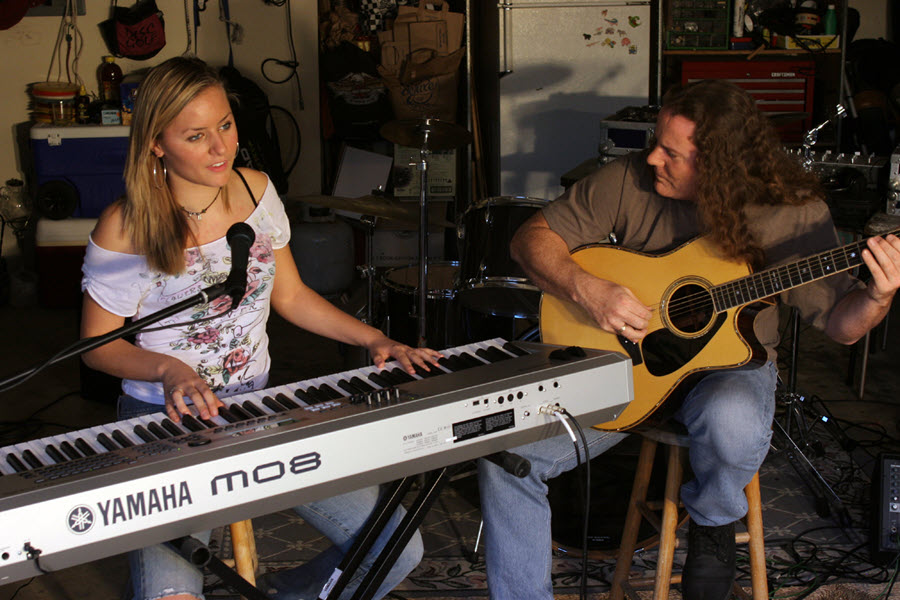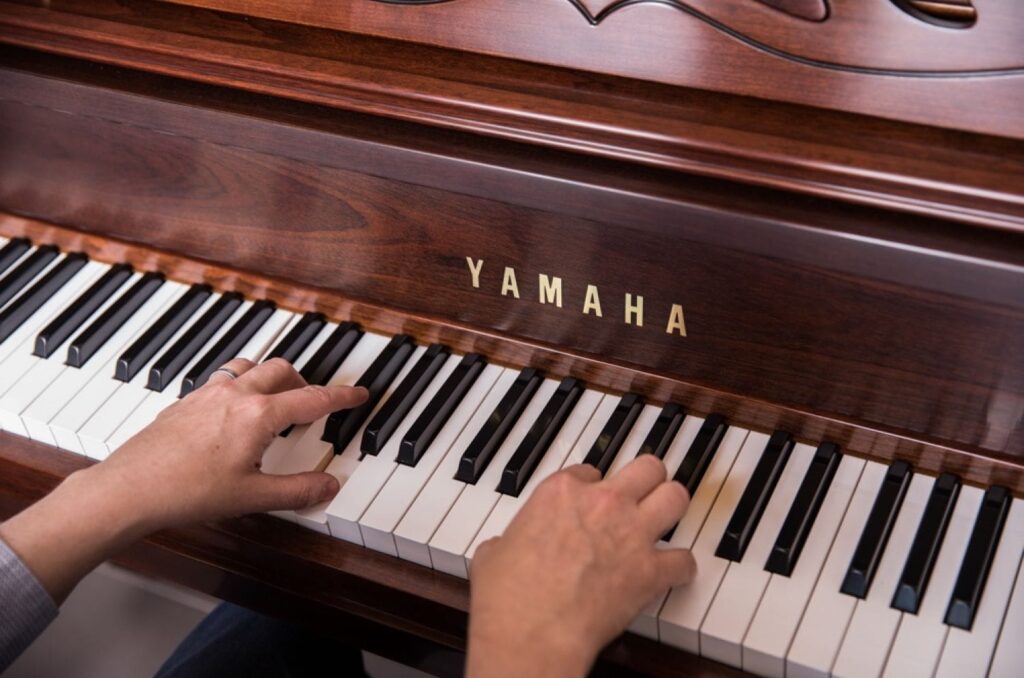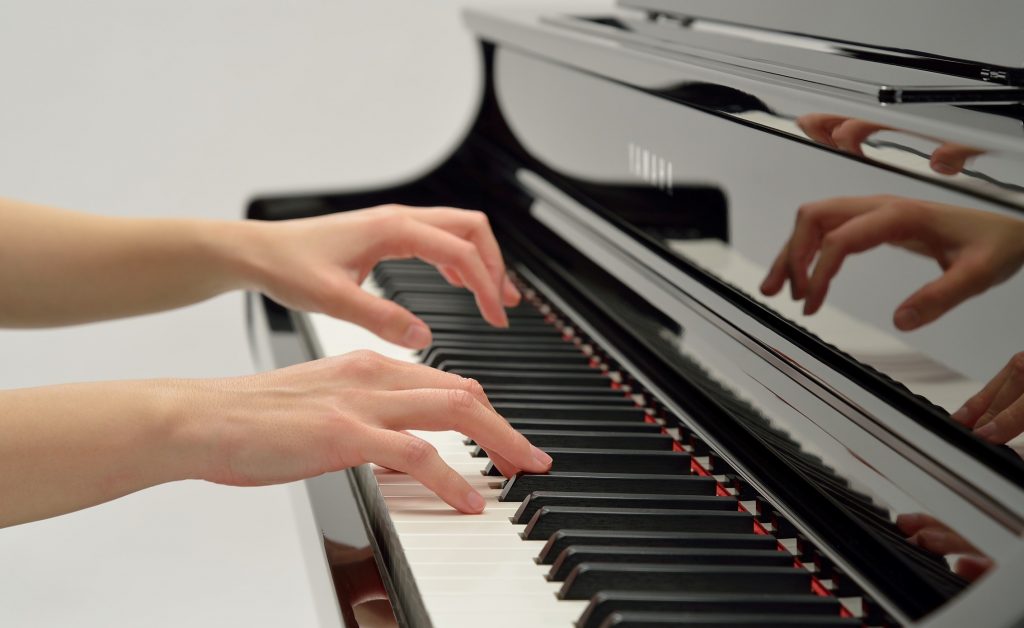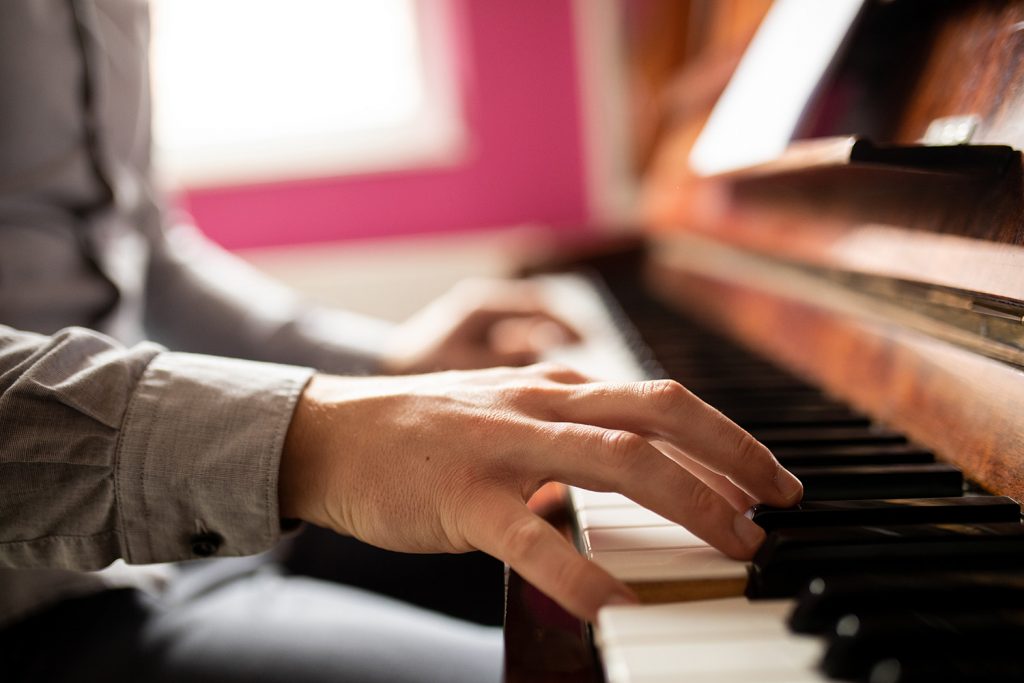Tagged Under:
Mastering Syncopation
Learn to navigate through tricky two-handed rhythms.
So much of the music we play on piano and keyboards has easy rhythms, allowing for smooth coordination between the hands. But there are times when you will encounter a piece of music, or even just a section within a song, where the rhythm gets a little more complicated and your two hands need to play very different parts at the same time. In those instances, you may stumble a bit and find that you can’t seem to get the parts feeling comfortable. Each hand by itself is easy enough, but when you try to put them together you hit the proverbial wall.
The most common reason for this is that the passage involves what is called syncopation: rhythms that fall between the strong beats of the measure, and where the two hands don’t always play the same beats at the same time. The answer to mastering these phrases is to learn how to count through the section, analyze how the two parts relate to each other, and then combine the two hands slowly while counting. Let’s explore how to do this.
Choose The Lowest Common Denominator Rhythm To Count
When you encounter these kind of problematic phrases, you will want to start by learning each hand separately. Work out your fingerings and practice at a slow tempo until each part feels comfortable. Then look and see what rhythms are being used for each hand; specifically, whether any notes are being played on sixteenth-note subdivisions, or just eighth notes. This will determine how you will approach counting in your head.
Eighth notes are counted by saying “one and two and three and four and,” dividing the quarter note into two equal subdivisions, as shown in the first measure below:

The second measure shows how sixteenth notes are counted by saying “one e and a, two e and a” and so on. The lower staff shows how each eighth note is being divided into two subdivisions, and how each quarter note is being divided into four.
Syncopating the Left Hand
Let’s look at some musical phrases to learn how to approach this task. This first example is a basic rock piano rhythm, with the left hand providing some simple syncopated accents:

Since everything is eighth-note-based, the counting is easy. The next thing to look for is how the hands relate to each other: Identify when the hands play on the same beat, and whether any note occurs only in one hand, and on what beat. In the example above, the right hand is playing on every eighth note, and the left hand plays along with the right hand on select beats. Piece of cake!
A good next step is to try tapping out the rhythms on your leg or a tabletop so you can work on the rhythm and hand coordination without worrying about playing particular notes, as shown in the video below. This is an especially good way to help children learn about rhythm.
Once that feels comfortable, you can go back to your keyboard and work on the passage some more.
Now let’s try a slightly more difficult example. This is a variation of the previous one, but here the left-hand accents have been changed:

Notice that the second left-hand accent has now been placed on a sixteenth-note beat just after the second downbeat. This means you’ll need to count sixteenth notes throughout the example, as shown above. In addition, that second left-hand accent occurs by itself, in-between the steady right-hand part. Work on it first as a tapping exercise, and try it at progressively faster tempos.
Here’s one more variation to help you get comfortable with this type of syncopated rhythm:

Now the third left hand accent is also syncopated, landing on the last sixteenth of beat three. Here’s the hand tapping workout:
Syncopating the Right Hand
Let’s flip the hands now, making the left hand the constant while adding syncopation to the right hand, like this:

Pay attention to how the right hand plays the first chord together with the left, in contrast with the next chord, which occurs between the left-hand beats. The same happens for the next two chords, and the last chord plays with the last eighth in the left hand. Tap it out first to get comfortable before playing the notes on your keyboard:
This next example gets more interesting harmonically and moves the left hand around:

Here, only two chords occur between the left-hand eighth notes: the second chord in each measure, which falls on the last sixteenth of the first beat. Here’s the tapping version:
Playing Two Different Parts At The Same Time
Often when playing keyboards live, you’ll not only be asked to play two different parts, but you’ll be required to play two different sounds at the same time — for example, playing a synth lead line part while also playing piano, or two different synth sounds.
The example below is modeled after a popular dance tune from the early 2000s. The left-hand chords would typically be played with a synth dance piano sound like this:

Notice how only the first chord of each measure is on a downbeat (a “strong” beat). Every other chord occurs on the weaker in-between beats, mostly on the and, or second eighth note of the beat. This gives the part a highly rhythmic and bouncy feel.
Now add the right-hand part to it, which is a steady stream of eighth notes played with a synth sound:

Pay attention to the second chord hit in each measure. This occurs on the last sixteenth of the beat (the “a” in your counting), and is the only time the two hands don’t play together. Practicing tapping the rhythms will help you get the feel of the rhythm.
This last example is modeled after an early ’70s funk classic, and would require you to play chords in your left hand using an electric piano sound, while playing brass lines in your right.
Here’s the left-hand part:

Notice again that most of the chords are played on an offbeat, with only the D9 and the C9 played on a downbeat (beat three).
Here’s what the two hands look and sound like when you add the brass part:

This is a tricky part to coordinate, so it’s important that you pay close attention to when the hands strike together and when notes occur in-between. The illustration below uses red highlights to show the notes that are played on their own, as opposed to when the hands strike together:

Working on tapping out the rhythms will certainly help you to get comfortable with this one!
Follow these suggestions for analyzing the relationship between the hands, finding the right way to count and tapping the rhythms first, and you will master even difficult syncopated phrases much more easily.
ALL PIANO EXAMPLES PLAYED ON A YAMAHA P-515
Check out our other Well-Rounded Keyboardist postings.
Click here for more information about Yamaha keyboard instruments.














